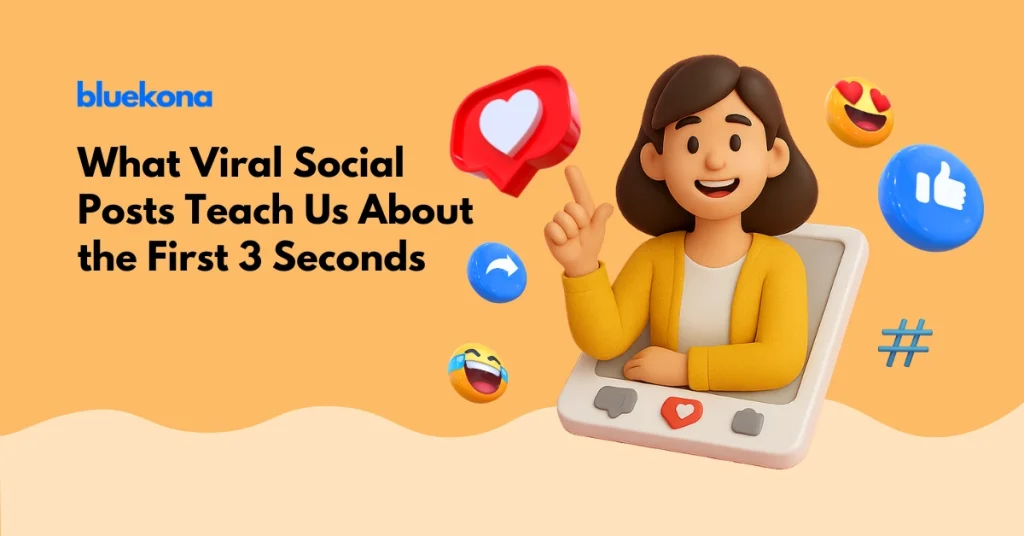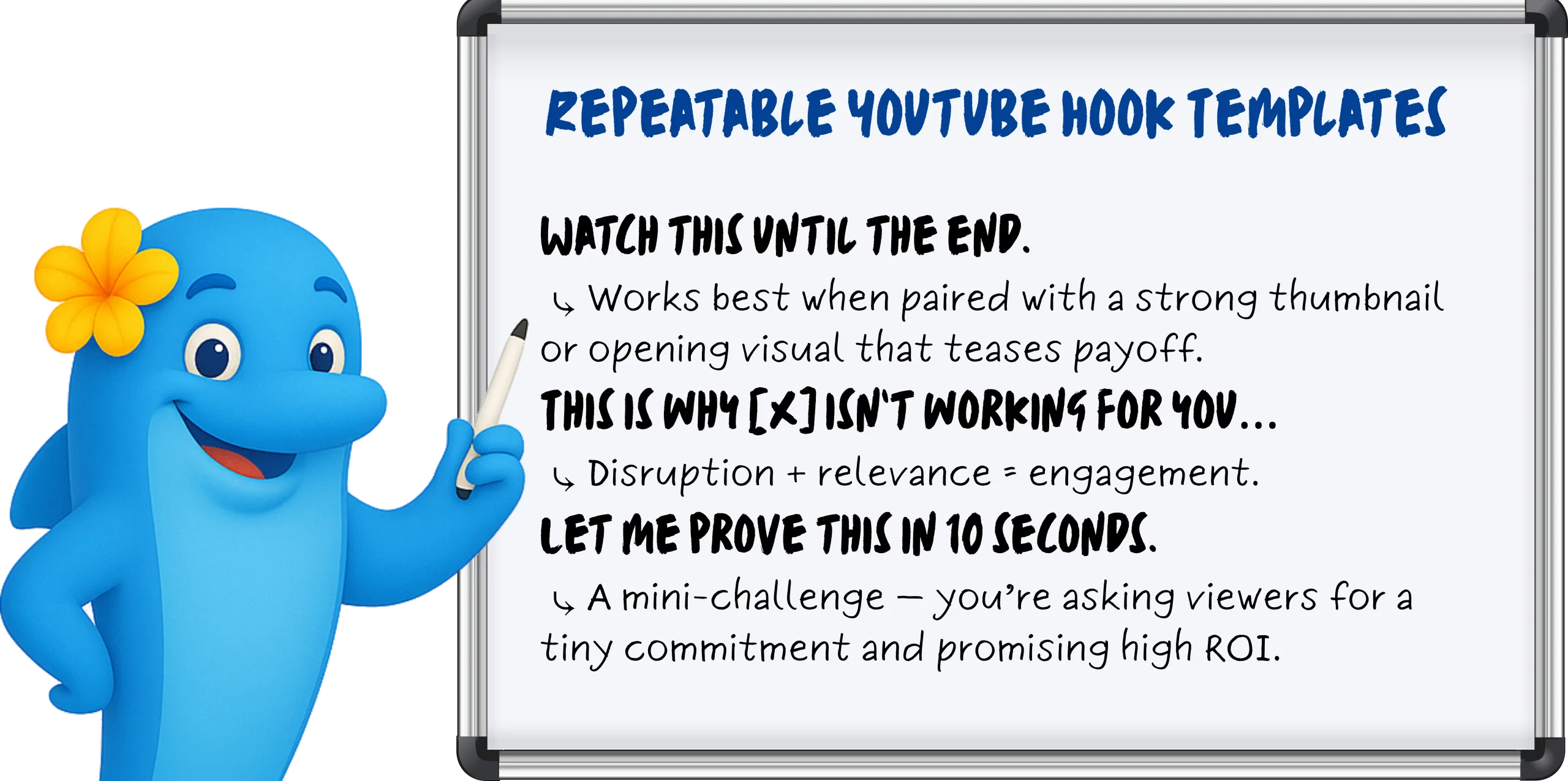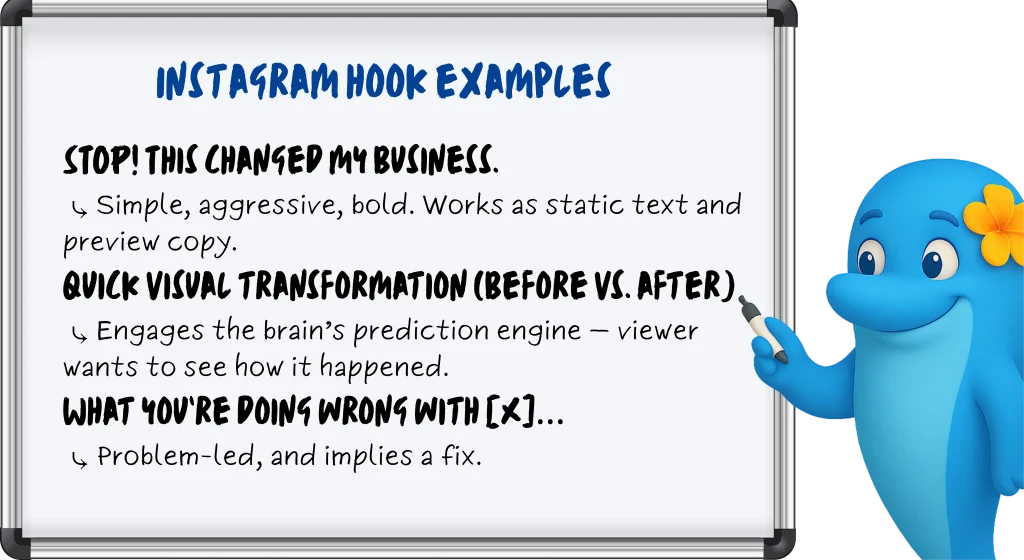
The scroll is ruthless. You have ~3 seconds to hook — or die.
Every platform’s algorithm,from YouTube to Instagram to LinkedIn, is designed to reward content that grabs attention instantly. Not eventually. Instantly. Weak openings? They get buried.
In this post, we’ll break down exactly what makes a powerful first three seconds on YouTube Shorts, Instagram Reels, and LinkedIn Carousels. You’ll see real examples, repeatable hook formulas, and data-backed strategies to improve your scroll-stop rate — no matter the platform.
If your job depends on getting people to watch, read, or engage, this is where you start.
The first three seconds aren’t just important — they’re make-or-break. In a feed moving faster than a caffeine-fueled scroll session, attention isn’t given. It’s earned instantly.
When it comes to YouTube Shorts, the first three seconds are less of an opening and more of a grenade. They need to explode fast, loud, and with purpose. Unlike longer-form YouTube content, there’s zero patience for buildup. The best-performing Shorts punch the viewer with motion, tension, or curiosity — immediately.
1. Hard Cuts & Pattern Disruption
The scroll stops when something breaks the feed’s rhythm. Think jarring transitions, zooms, sudden audio bursts — anything that snaps the brain awake. The goalis to disrupt the default passive scroll.
2. Immediate Voiceovers
Top creators open with lines like:
The pattern? They open with tension, contradiction, or a bold promise — within the first breath.
3. Motion-Heavy or Unexpected Visuals
Whether it’s fast jump cuts, punch-ins on facial expressions, or text that animates with meaning — static = skipped. Viewers are drawn to movement, so even talking heads layer in kinetic typography, visual overlays, or reaction-style inserts to hold attention.

Instagram Reels doesn’t reward slow burns — it rewards sensory ambush. If YouTube Shorts is about pacing and narrative tension, Reels is about vibe and visual punch, often before the viewer even taps.
Your job? Interrupt the scroll within one second — visually or audibly.
1. Trending Audio Cues (First Second or Bust)
Instagram’s algorithm loves audio-native behavior. That means syncing your first second with a recognizable sound — a beat drop, a voiceover hook, or a viral soundbite — to instantly trigger familiarity.
2. Timed Text Overlays (Preview-Optimized)
Your first frame matters before the viewer even hits play. The preview frame is your thumbnail. Strategic creators time bold text overlays to appear in the first 0.3 seconds, so the hook is already visible in-feed.
3. High-Contrast or Unexpected Visuals
Surreal edits. Face-reacts. Props in weird places. Reels thrives on visual thumb-breakers that contrast with lifestyle content around it. If your face fills the frame and your eyes say “wait for it” — it works.

On LinkedIn, the first slide isn’t an intro — it’s a knife fight for attention. Forget clever setups or brand-heavy titles. If your lead slide doesn’t provoke curiosity, urgency, or ego in under a second, you’ve already lost the click.
1. Stat-Based Hooks That Challenge or Alarm
Cold, hard numbers perform well — especially when they suggest most people are doing something wrong.
Example Slide 1: “78% of marketers miss this — are you one of them?”
Why it works: Social proof meets FOMO. Feeds into ego, curiosity, and self-assessment — all at once.
2. Provocative Questions That Poke at Pain Points
Challenge the reader’s status quo. Swipe-worthy carousels open with a line that hits where it hurts — budget, performance, perception.
Slide 1: “Are your campaigns bleeding money?”
Slide 1: “Your boss cares about ROI. Show this.”
Why it works: LinkedIn users are job-focused — pain + solution = performance.
3. Visual Hierarchy & Contrast
Big fonts. Bold text. Negative space. Colors that don’t blend in with the sea of blue and beige. The first slide should feel like a bold poster — not a polite cover.
Slide 1: “Most social strategies suck. Here’s why yours might too.”
Why it works: No fluff, no intro, just friction and value in one frame.
You’ve posted. You’ve hoped. Maybe even prayed to the algorithm gods. But which hooks actually worked — and which ones got ghosted?
BlueKona takes the guesswork out of performance. It analyzes your posts across platforms — YouTube Shorts, Instagram Reels, LinkedIn Carousels — by impressions vs. engagement, so you can see exactly which hooks stopped the scroll… and which ones got scrolled right past.
You’ll know:
No more gut instinct. No more guessing. Just clear, scroll-stopping insight.

Dec 26, 2025Anjana Devi
Your social posts are your storefront. Every TikTok video, Instagram Reel, and Facebook carousel is a first impression—a chance to turn scrollers into sippers. But here’s the uncomfortable truth: if you’re posting seven times a week and can’t name your top-performing post, you don’t need new ideas. You need a better audit. Most beverage brands […]

Dec 19, 2025Anjana Devi
78% people prefer learning about products through video but the catch is only 31% will finish a poorly-edited one. The rest? Gone — swiping to your competitor, clicking away, or worse, teaching the algorithm your content isn’t worth surfacing. Editing is no longer about looking slick. It’s about being seen, shared, and searched. The SMBs […]